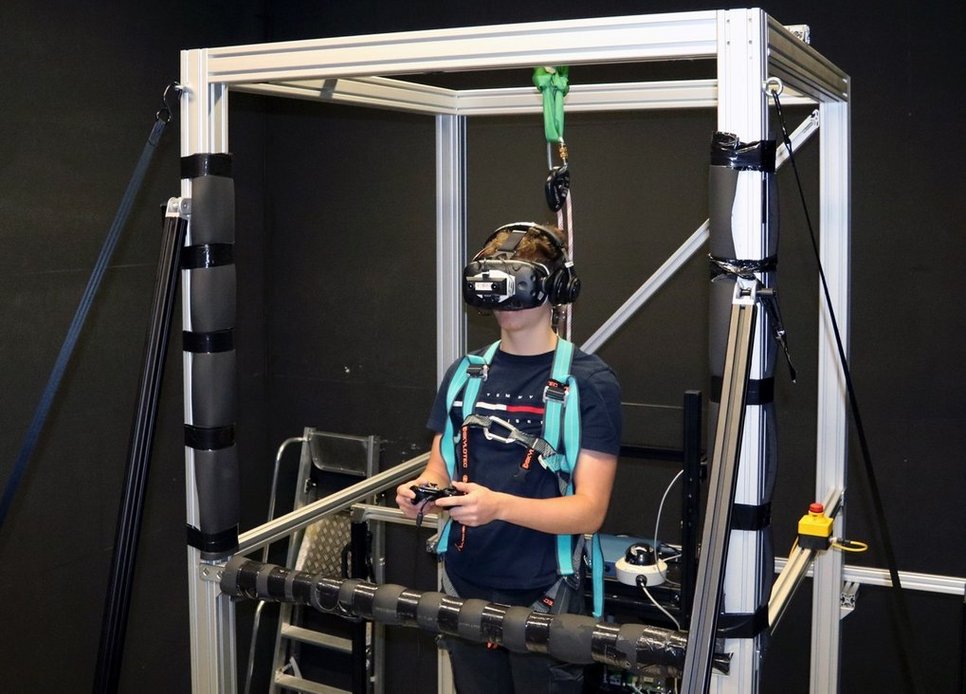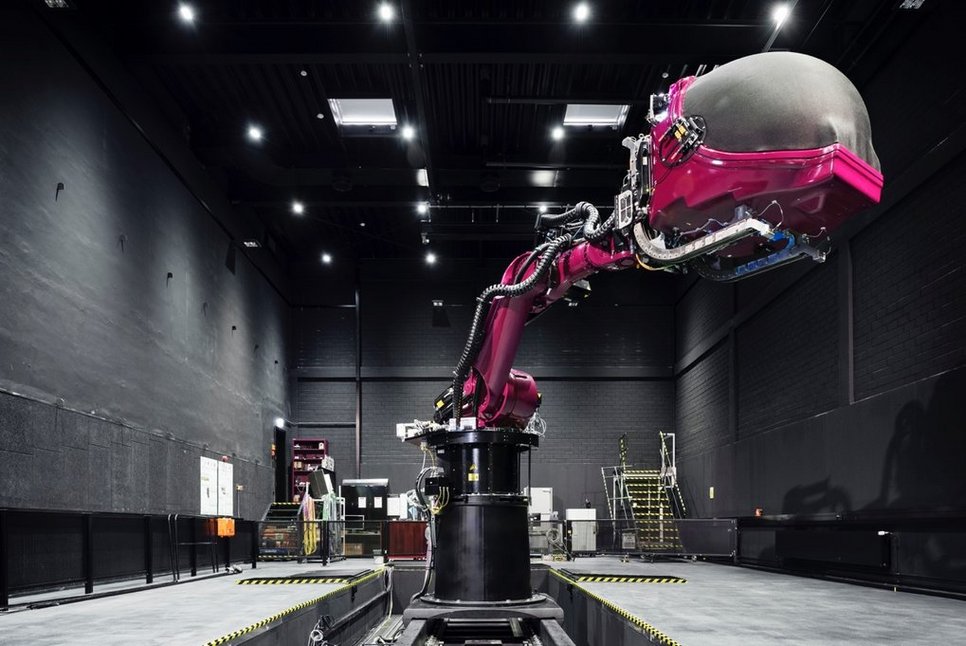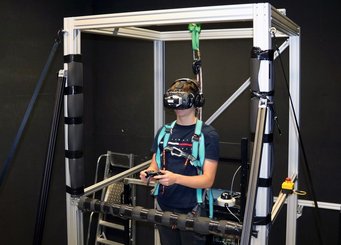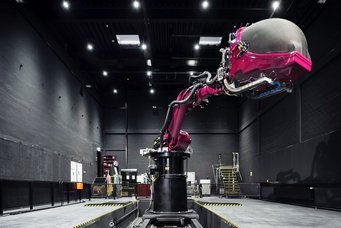Highschool pays a visit
The MPI for Biological Cybernetics and a local highschool in Tübingen further cooperate in the promotion of young MINT researchers
Today, students from the Geschwister-Scholl-Schule (GSS) in Tübingen visited the Max Planck Institute for Biological Cybernetics. Prof. Heinrich Bülthoff and Harald Teufel from the Department of Human Perception, Cognition and Action gave a lecture on perception research in virtual worlds and showcased experiments with motion simulators. At the institute, the pupils from course levels 11 and 12 were able to gain additional insights into the research work and got to know the various experimental facilities themselves as test subjects.

Ksander de Winkel, another scientist of the working group, showed an experiment on the motion platform, also called CyberPod. The CyberPod is a motion simulator that can move and tilt a platform in all directions using controllable actuators. In combination with virtual reality technologies, the scientist is investigating how we manage to stand upright - even under disturbing influences. To ensure this, our brain processes sensory impressions of the visual system and the sense of balance in the inner ear. At the same time, it processes information from various receptors distributed throughout the body (somatosensors), which are located, for example, in the muscle spindles and the skin.
The students were able to experience De Winkel's experiment as a test participant. Their reactions to changing visual stimuli and changing movements of the CyberPod were recorded on a force plate with a head-mounted display on their head. In this way, De Winkel can determine how the students process and coordinate different sensory perceptions. At times, movement and optical information contradicted each other, and the young subjects had difficulty maintaining balance. With this, however, the students now understood much better how new clues and insights about perception and action processes in the brain can be investigated with test arrangements like this one.
Meanwhile, another group marvelled at the CyberMotion Simulator (CMS). This was developed at the institute as an alternative to conventional movement simulators. It is based on an industrial robot arm, but has been greatly modified and extended. Its significantly larger range of motion now enables scientists to realistically simulate a car trip or a helicopter flight, for example. This allows you to better understand how humans can take on even difficult control tasks. This understanding will also help us to create simpler and more intuitive human-machine interfaces in the future.

With the MINT cooperation, the GSS and the Max Planck Institute for Biological Cybernetics would like to give the pupils an insight into state-of-the-art research work taking place in the immediate vicinity of the school. Last but not least, the aim is to get them excited about scientific research and to show them what exciting questions can be pursued in an interdisciplinary research group.

